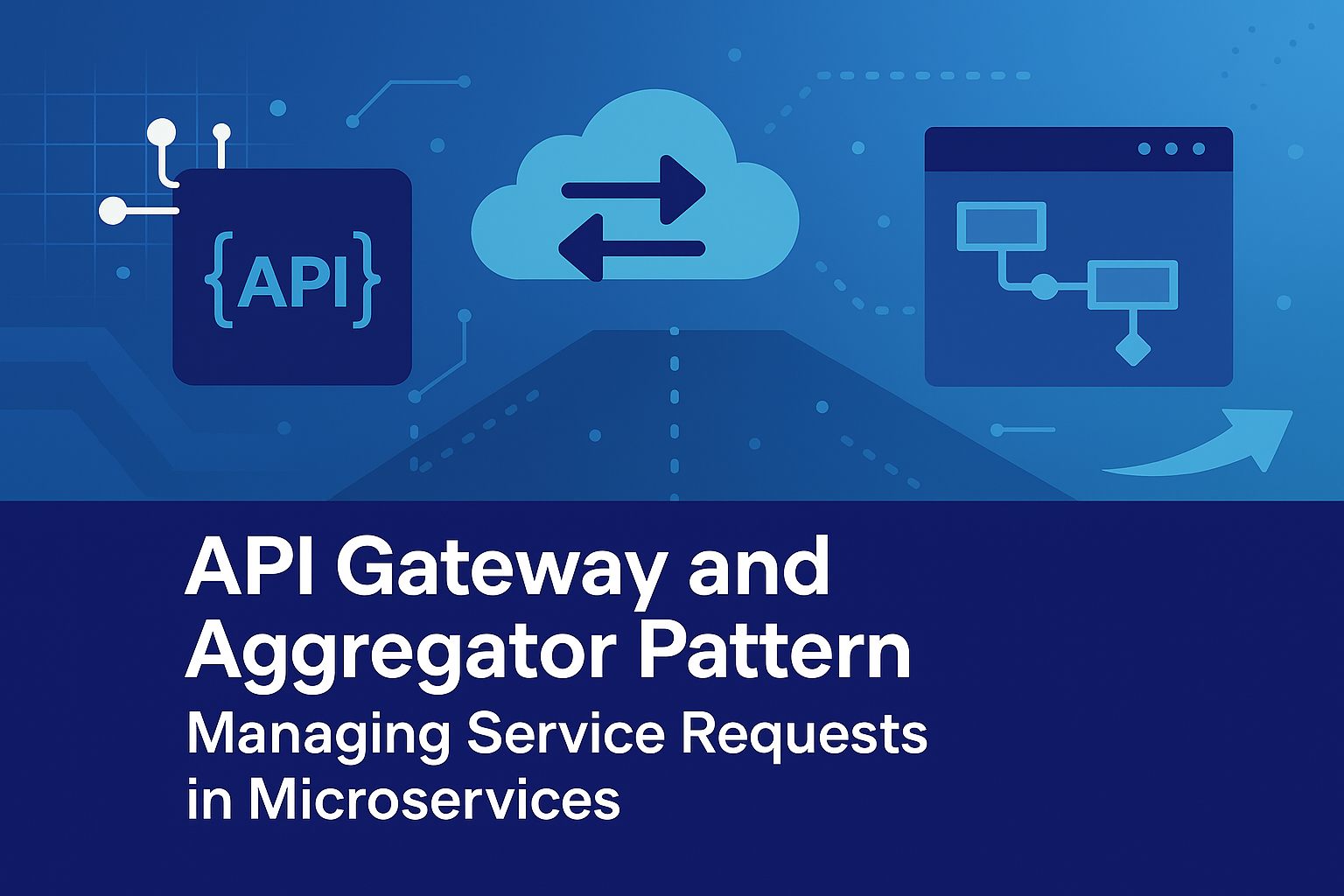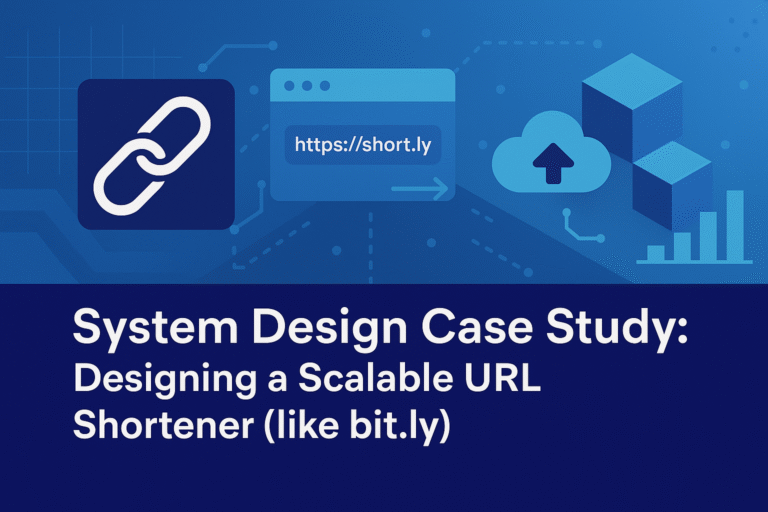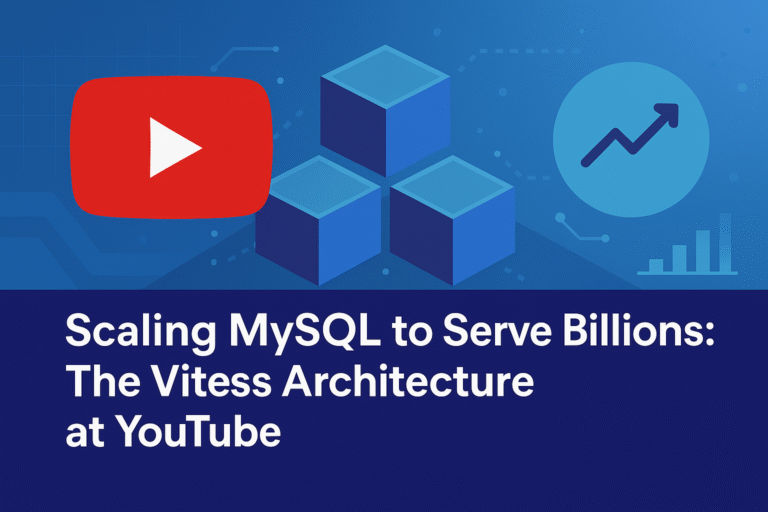Introduction
In microservices architectures, managing service requests efficiently while maintaining scalability, security, and a seamless client experience is a critical challenge. The API Gateway and Aggregator Pattern are design patterns that address these challenges by providing a centralized entry point for client requests and orchestrating data aggregation from multiple services, respectively. The API Gateway acts as a reverse proxy, routing requests, handling cross-cutting concerns (e.g., authentication, rate limiting), and simplifying client interactions. The Aggregator Pattern composes responses from multiple microservices into a unified view, reducing client complexity and network overhead. These patterns are essential for building resilient, scalable systems that support high throughput (e.g., 1M req/s) and low latency (< 50ms). This comprehensive analysis explores the mechanisms, implementation strategies, advantages, limitations, and trade-offs of API Gateways and Aggregators, with C# code examples as per your preference. It integrates foundational distributed systems concepts from your prior conversations, including the CAP Theorem (balancing consistency, availability, and partition tolerance), consistency models (strong vs. eventual), consistent hashing (for load distribution), idempotency (for reliable operations), unique IDs (e.g., Snowflake for tracking), heartbeats (for liveness), failure handling (e.g., circuit breakers, retries, dead-letter queues), single points of failure (SPOFs) avoidance, checksums (for data integrity), GeoHashing (for location-aware routing), rate limiting (for traffic control), Change Data Capture (CDC) (for data synchronization), load balancing (for resource optimization), quorum consensus (for coordination), multi-region deployments (for global resilience), capacity planning (for resource allocation), backpressure handling (to manage load), exactly-once vs. at-least-once semantics (for event delivery), event-driven architecture (EDA) (for loose coupling), microservices design best practices, inter-service communication, data consistency, deployment strategies, testing strategies, and Domain-Driven Design (DDD) with Bounded Contexts. Drawing on your interest in e-commerce integrations, API scalability, resilient systems, and prior queries (e.g., saga patterns, EDA, and DDD), this guide provides a structured framework for architects to implement API Gateways and Aggregators, ensuring robust request management in microservices.
Core Principles of API Gateway and Aggregator Pattern
API Gateway
The API Gateway is a centralized entry point for client requests, abstracting the complexity of the microservices architecture. It handles routing, authentication, rate limiting, monitoring, and protocol translation, providing a unified interface to clients.
- Key Functions:
- Routing: Directs requests to appropriate services (e.g., /orders to Order service).
- Authentication/Authorization: Validates clients using OAuth 2.0 or JWT.
- Rate Limiting: Controls traffic (e.g., 100,000 req/s/user), as per your rate limiting query.
- Load Balancing: Distributes requests using consistent hashing, as per your load balancing query.
- Security: Enforces TLS 1.3, validates checksums (e.g., SHA-256).
- Monitoring: Tracks latency (< 50ms), error rate (< 0.1%), and throughput (1M req/s).
- Protocol Translation: Converts client protocols (e.g., HTTP to gRPC).
- Mathematical Foundation:
- Latency Overhead: Latency = gateway_processing + network_delay (e.g., 5 ms processing + 10 ms network = 15 ms)
- Throughput: Throughput = instances × req_per_instance (e.g., 10 instances × 100,000 req/s = 1 M req/s)
- Availability: 1 − (1 − instance_availability)N (e.g., 99.999% with 3 replicas at 99.9%)
- Integration with Concepts:
- CAP Theorem: Favors AP (availability and partition tolerance) with eventual consistency for most operations, as per your CAP query.
- Failure Handling: Uses circuit breakers and retries for downstream services.
- Heartbeats: Monitors service health (< 5s detection).
- SPOFs: Avoided via replication (e.g., 3 gateway instances).
Aggregator Pattern
The Aggregator Pattern orchestrates data from multiple microservices to compose a unified response for clients. It can be implemented within the API Gateway or as a separate service, reducing client-side complexity and network calls.
- Key Functions:
- Data Composition: Combines responses (e.g., Order + Payment + Inventory data).
- Orchestration: Calls services sequentially or in parallel (e.g., REST/gRPC calls).
- Transformation: Maps internal models to client-friendly formats (e.g., DDD Anti-Corruption Layer).
- Caching: Stores aggregated results in Redis (< 0.5ms access).
- Idempotency: Ensures safe retries (e.g., Snowflake IDs).
- Mathematical Foundation:
- Response Time: Time = max(service_latencies) + aggregation_time (e.g., max(20 ms, 15 ms, 10 ms) + 5 ms = 25 ms)
- Network Calls: Reduced from N to 1 for client (e.g., 3 service calls → 1 aggregated call)
- Cache Hit Rate: Hit_Rate = cached_requests / total_requests (e.g., 80% for frequent queries)
- Integration with Concepts:
- Data Consistency: Handles eventual consistency via events or sagas, as per your data consistency query.
- EDA: Uses events (e.g., Kafka) for asynchronous aggregation, as per your EDA query.
- Saga Patterns: Orchestrates workflows across contexts, as per your saga query.
- DDD: Aligns with Bounded Contexts (e.g., Order, Payment contexts), as per your DDD query.
Mechanisms and Implementation
API Gateway
- Routing: Maps client requests to services (e.g., /v1/orders to Order service).
- Authentication: Validates tokens (e.g., OAuth 2.0, JWT).
- Rate Limiting: Uses Token Bucket or Leaky Bucket (e.g., 100,000 req/s/user).
- Load Balancing: Distributes traffic with consistent hashing (e.g., NGINX, Envoy).
- Circuit Breaking: Prevents cascading failures (e.g., Polly in C#).
- Monitoring: Tracks metrics with Prometheus/Grafana.
- Security: Enforces TLS 1.3, verifies checksums (SHA-256).
- Tools: AWS API Gateway, Kong, Envoy, or custom ASP.NET Core middleware.
Aggregator Pattern
- Synchronous Aggregation: Calls services via REST/gRPC, combining responses (e.g., Order + Payment).
- Asynchronous Aggregation: Subscribes to events (e.g., Kafka) for eventual consistency.
- Transformation: Maps data using DDD Anti-Corruption Layer.
- Caching: Uses Redis to cache results, reducing latency.
- Failure Handling: Implements retries, timeouts, and DLQs.
Detailed Analysis
API Gateway
Advantages:
- Simplified Client Experience: Single entry point reduces client complexity (e.g., one endpoint vs. 5 service endpoints).
- Centralized Concerns: Handles authentication, rate limiting, and monitoring (e.g., 20% less client code).
- Scalability: Scales horizontally (e.g., 1M req/s with 10 instances).
- Security: Enforces consistent policies (e.g., TLS, OAuth).
Limitations:
- SPOF Risk: Gateway can become a bottleneck unless replicated (e.g., 3 instances for 99.999% uptime).
- Latency Overhead: Adds 5–10ms processing time.
- Complexity: Managing routing and policies adds 20–30% DevOps overhead.
- Cost: High traffic increases costs (e.g., $0.01/1M req in AWS API Gateway).
Use Cases:
- E-commerce API (e.g., Shopify integration, as per your query) for unified client access.
- Banking systems requiring secure authentication (e.g., OAuth for transactions).
- IoT platforms handling high request volumes (e.g., 1M req/s).
Aggregator Pattern
Advantages:
- Reduced Network Calls: One client call vs. multiple (e.g., 3x fewer calls).
- Client-Friendly Responses: Unified data format (e.g., combined Order + Payment).
- Performance: Caching reduces latency (e.g., < 0.5ms with Redis).
- Flexibility: Supports synchronous and asynchronous aggregation.
Limitations:
- Orchestration Complexity: Coordinating multiple services adds 20% code complexity.
- Eventual Consistency: Asynchronous aggregation risks staleness (10–100ms), as per your data consistency query.
- Error Handling: Partial failures require robust logic (e.g., circuit breakers).
- Scalability Limits: Synchronous aggregation limits throughput (e.g., 10,000 req/s vs. 100,000 for EDA).
Use Cases:
- E-commerce dashboards aggregating order, payment, and inventory data.
- Financial reports combining transaction and ledger data.
- IoT analytics aggregating sensor data, as per your EDA query.
Trade-Offs and Strategic Considerations
- Latency vs. Simplicity:
- API Gateway: Adds latency (5–10ms) but simplifies client interactions.
- Aggregator: Increases response time (e.g., 25ms) but reduces client calls.
- Decision: Use Gateway for unified access, Aggregator for complex responses.
- Interview Strategy: Propose Gateway for client apps, Aggregator for dashboards.
- Scalability vs. Consistency:
- API Gateway: Scales well (1M req/s) but requires replication to avoid SPOFs.
- Aggregator: Asynchronous mode scales better (100,000 req/s) but risks eventual consistency.
- Decision: Use Gateway for high traffic, Aggregator with caching for performance.
- Interview Strategy: Highlight Gateway for Netflix, Aggregator for e-commerce.
- Complexity vs. Flexibility:
- API Gateway: Complex to configure but flexible for cross-cutting concerns.
- Aggregator: Complex orchestration but flexible for data composition.
- Decision: Gateway for centralized control, Aggregator for dynamic responses.
- Interview Strategy: Justify Gateway for security, Aggregator for reports.
- Cost vs. Resilience:
- API Gateway: Higher cost ($0.01/1M req) but ensures robust routing.
- Aggregator: Caching reduces costs but requires failure handling.
- Decision: Gateway for critical apps, Aggregator for cost-sensitive.
- Interview Strategy: Propose Gateway for banking, Aggregator for startups.
Integration with Prior Concepts
- CAP Theorem: Gateway favors AP for availability, Aggregator supports AP (asynchronous) or CP (synchronous), as per your CAP query.
- Consistency Models: Aggregator handles eventual consistency via events, as per your data consistency query.
- Consistent Hashing: Gateway uses it for load balancing (e.g., NGINX).
- Idempotency: Ensures safe retries in both (e.g., Snowflake IDs).
- Heartbeats: Monitors service health (< 5s detection).
- Failure Handling: Uses circuit breakers, retries, and DLQs, as per your failure handling query.
- SPOFs: Avoided via replication (e.g., 3 Gateway instances).
- Checksums: SHA-256 ensures data integrity.
- GeoHashing: Routes requests by location (e.g., regional orders).
- Rate Limiting: Caps traffic in Gateway (e.g., 100,000 req/s).
- CDC: Syncs data for Aggregator (e.g., Debezium), as per your data consistency query.
- Load Balancing: Distributes traffic in Gateway (e.g., Envoy).
- Quorum Consensus: Ensures broker reliability for Aggregator (e.g., Kafka KRaft).
- Multi-Region: Reduces latency (< 50ms) for both, as per your multi-region query.
- Backpressure: Manages load in Aggregator (e.g., buffering), as per your backpressure query.
- EDA: Aggregator uses events for asynchronous composition, as per your EDA query.
- Saga Patterns: Aggregator orchestrates sagas, as per your saga query.
- DDD: Aligns with Bounded Contexts (e.g., Order, Payment), as per your DDD query.
- Deployment Strategies: Supports Blue-Green/Canary for Gateway/Aggregator, as per your deployment query.
- Testing Strategies: Tests Gateway routing and Aggregator composition, as per your testing query.
Real-World Use Cases
1. E-Commerce API Management
- Context: An e-commerce platform (e.g., Shopify, Amazon integration, as per your query) processes 100,000 orders/day, needing unified client access.
- API Gateway:
- Routes /v1/orders to Order service, /v1/payments to Payment service (ASP.NET Core Gateway).
- Handles OAuth 2.0, rate limiting (100,000 req/s), and TLS 1.3.
- Metrics: < 15ms latency, 100,000 req/s, 99.999% uptime.
- Aggregator:
- Composes order, payment, and inventory data for a dashboard API (/v1/customer).
- Caches in Redis (< 0.5ms), uses Kafka for asynchronous updates.
- Metrics: < 25ms response, 10,000 req/s.
- Trade-Off: Gateway simplifies client access, Aggregator reduces network calls.
- Strategic Value: Enhances user experience with unified APIs.
2. Financial Transaction System
- Context: A bank processes 500,000 transactions/day, requiring secure and consistent APIs, as per your tagging system query.
- API Gateway:
- Secures /v1/transactions with JWT and circuit breakers (Envoy).
- Routes to Transaction and Ledger services (gRPC).
- Metrics: < 20ms latency, 10,000 req/s, 99.999% uptime.
- Aggregator:
- Combines transaction and ledger data for reports, using synchronous gRPC calls.
- Ensures strong consistency for compliance.
- Metrics: 50ms response, 5,000 req/s.
- Trade-Off: Gateway ensures security, Aggregator ensures data consistency.
- Strategic Value: Critical for financial compliance and reporting.
3. IoT Sensor Monitoring
- Context: A smart city processes 1M sensor readings/s, needing scalable APIs, as per your EDA query.
- API Gateway:
- Routes /v1/sensors to Sensor service, uses GeoHashing for regional routing (Kong).
- Handles 1M req/s with rate limiting and load balancing.
- Metrics: < 10ms latency, 1M req/s, 99.999% uptime.
- Aggregator:
- Aggregates sensor data via Pulsar events (asynchronous), caches in Redis.
- Metrics: < 15ms response, 100,000 req/s.
- Trade-Off: Gateway scales for traffic, Aggregator optimizes data retrieval.
- Strategic Value: Supports real-time analytics with high throughput.
Implementation Guide
// API Gateway (ASP.NET Core Middleware)
using Microsoft.AspNetCore.Builder;
using Microsoft.Extensions.Configuration;
using Microsoft.Extensions.DependencyInjection;
using Polly;
using System.Net.Http;
public class Startup
{
public void ConfigureServices(IServiceCollection services)
{
// Add HTTP client for downstream services
services.AddHttpClient("OrderService", c => c.BaseAddress = new Uri("http://order-service"));
services.AddHttpClient("PaymentService", c => c.BaseAddress = new Uri("http://payment-service"));
// Add circuit breaker
services.AddHttpClient("CircuitBreakerClient")
.AddPolicyHandler(Policy<HttpResponseMessage>
.HandleTransientHttpError()
.CircuitBreakerAsync(5, TimeSpan.FromSeconds(30)));
}
public void Configure(IApplicationBuilder app, IConfiguration config)
{
app.UseRouting();
app.UseAuthentication(); // OAuth 2.0 middleware
app.UseRateLimiter(); // Custom rate limiting (100,000 req/s)
app.UseEndpoints(endpoints =>
{
endpoints.MapGet("/v1/customer/{id}", async context =>
{
var clientFactory = context.RequestServices.GetRequiredService<IHttpClientFactory>();
var customerId = context.Request.RouteValues["id"].ToString();
// Aggregator Pattern: Fetch data from multiple services
var aggregator = new CustomerAggregator(clientFactory);
var customerData = await aggregator.GetCustomerDataAsync(customerId);
await context.Response.WriteAsJsonAsync(customerData);
});
});
}
}
// Aggregator Pattern
public class CustomerAggregator
{
private readonly IHttpClientFactory _clientFactory;
public CustomerAggregator(IHttpClientFactory clientFactory)
{
_clientFactory = clientFactory;
}
public async Task<CustomerData> GetCustomerDataAsync(string customerId)
{
// Parallel calls to Order and Payment services
var orderTask = FetchOrderDataAsync(customerId);
var paymentTask = FetchPaymentDataAsync(customerId);
await Task.WhenAll(orderTask, paymentTask);
// Aggregate responses
var orders = await orderTask;
var payments = await paymentTask;
return new CustomerData
{
CustomerId = customerId,
Orders = orders,
Payments = payments
};
}
private async Task<List<Order>> FetchOrderDataAsync(string customerId)
{
var client = _clientFactory.CreateClient("OrderService");
var response = await client.GetAsync($"/v1/orders?customerId={customerId}");
response.EnsureSuccessStatusCode();
return await response.Content.ReadFromJsonAsync<List<Order>>();
}
private async Task<List<Payment>> FetchPaymentDataAsync(string customerId)
{
var client = _clientFactory.CreateClient("PaymentService");
var response = await client.GetAsync($"/v1/payments?customerId={customerId}");
response.EnsureSuccessStatusCode();
return await response.Content.ReadFromJsonAsync<List<Payment>>();
}
}
public class CustomerData
{
public string CustomerId { get; set; }
public List<Order> Orders { get; set; }
public List<Payment> Payments { get; set; }
}
public class Order
{
public string OrderId { get; set; } // Snowflake ID
public double Amount { get; set; }
}
public class Payment
{
public string PaymentId { get; set; } // Snowflake ID
public string OrderId { get; set; }
public double Amount { get; set; }
}
// Kafka Consumer for Asynchronous Aggregation
using Confluent.Kafka;
public class OrderEventConsumer : BackgroundService
{
private readonly IConsumer<Null, string> _consumer;
private readonly IRedisCache _cache;
public OrderEventConsumer(IConsumer<Null, string> consumer, IRedisCache cache)
{
_consumer = consumer;
_cache = cache;
_consumer.Subscribe("orders");
}
protected override async Task ExecuteAsync(CancellationToken stoppingToken)
{
while (!stoppingToken.IsCancellationRequested)
{
var result = _consumer.Consume(stoppingToken);
var @event = System.Text.Json.JsonSerializer.Deserialize<OrderPlacedEvent>(result.Message.Value);
// Idempotency check
if (await _cache.IsProcessedAsync(@event.EventId)) continue;
// Cache event for aggregation
await _cache.StoreAsync($"order:{@event.OrderId}", @event);
}
}
}
public class OrderPlacedEvent
{
public string EventId { get; set; } // Snowflake ID
public string OrderId { get; set; }
public double Amount { get; set; }
}
public interface IRedisCache
{
Task<bool> IsProcessedAsync(string eventId);
Task StoreAsync(string key, object value);
}Deployment Configuration (docker-compose.yml)
# docker-compose.yml
version: '3.8'
services:
api-gateway:
image: api-gateway:latest
environment:
- ORDER_SERVICE_URL=http://order-service:8080
- PAYMENT_SERVICE_URL=http://payment-service:8080
- REDIS_CONNECTION=redis:6379
depends_on:
- order-service
- payment-service
- redis
order-service:
image: order-service:latest
environment:
- KAFKA_BOOTSTRAP_SERVERS=kafka:9092
payment-service:
image: payment-service:latest
environment:
- KAFKA_BOOTSTRAP_SERVERS=kafka:9092
kafka:
image: confluentinc/cp-kafka:latest
environment:
- KAFKA_NUM_PARTITIONS=20
- KAFKA_REPLICATION_FACTOR=3
- KAFKA_RETENTION_MS=604800000
redis:
image: redis:latestImplementation Details
- API Gateway:
- Implemented as ASP.NET Core middleware, handling routing, authentication, and rate limiting.
- Uses Polly for circuit breaking and retries.
- Routes /v1/customer to Aggregator for composition.
- Aggregator:
- Synchronously fetches data via HTTP clients (Order, Payment services).
- Asynchronously caches events in Redis for low-latency aggregation.
- Uses idempotency with Snowflake IDs for safe event handling.
- Deployment:
- Kubernetes with 10 pods/gateway (4 vCPUs, 8GB RAM), 5 Kafka brokers (16GB RAM, SSDs).
- Supports Blue-Green/Canary deployments, as per your deployment query.
- Monitoring:
- Prometheus for latency (< 50ms), throughput (100,000 req/s), error rate (< 0.1%).
- Jaeger for tracing, CloudWatch for alerts.
- Security:
- TLS 1.3, OAuth 2.0, SHA-256 checksums.
- Testing:
- Unit tests for Aggregator logic (xUnit, Moq).
- Integration tests for Gateway routing (Testcontainers).
- Contract tests for service APIs (Pact), as per your testing query.
Advanced Implementation Considerations
- Performance Optimization:
- Cache aggregated responses in Redis (< 0.5ms access).
- Use GZIP compression for 50–70% network reduction.
- Parallelize Aggregator calls to reduce latency (e.g., 25ms to 15ms).
- Scalability:
- Scale Gateway with Kubernetes autoscaling (e.g., 10–20 pods for 1M req/s).
- Use Kafka for asynchronous Aggregator (100,000 events/s).
- Resilience:
- Implement circuit breakers (Polly) for Gateway and Aggregator.
- Use DLQs for failed events, retries with exponential backoff.
- Monitoring:
- Track SLIs: latency (< 50ms), throughput (100,000 req/s), availability (99.999%).
- Alert on error spikes (> 0.1%) via CloudWatch.
- Testing:
- Stress-test Gateway with JMeter (1M req/s).
- Validate Aggregator with Chaos Monkey (< 5s recovery).
- Test contract compatibility with Pact Broker.
- Multi-Region:
- Deploy Gateway per region for low latency (< 50ms).
- Use GeoHashing for regional routing.
Discussing in System Design Interviews
- Clarify Requirements:
- Ask: “What’s the throughput (1M req/s)? Consistency needs? Client complexity?”
- Example: Confirm high traffic for e-commerce, strong consistency for banking.
- Propose Strategy:
- Suggest API Gateway for unified access, Aggregator for complex responses.
- Example: “Use Gateway for client apps, Aggregator for dashboards.”
- Address Trade-Offs:
- Explain: “Gateway adds latency but simplifies clients; Aggregator reduces calls but risks consistency.”
- Example: “Use Gateway for Netflix APIs, Aggregator for reports.”
- Optimize and Monitor:
- Propose: “Optimize with caching, monitor with Prometheus.”
- Example: “Track Gateway latency to ensure < 50ms.”
- Handle Edge Cases:
- Discuss: “Mitigate SPOFs with replication, handle failures with circuit breakers.”
- Example: “Use DLQs for failed Aggregator events.”
- Iterate Based on Feedback:
- Adapt: “If cost is key, simplify Aggregator; if scale, enhance Gateway.”
- Example: “Use lightweight Gateway for startups.”
Conclusion
The API Gateway and Aggregator Pattern are critical for managing service requests in microservices. The Gateway provides a unified, secure entry point, handling routing, authentication, and rate limiting, while the Aggregator composes data from multiple services, reducing client complexity. By integrating with concepts like EDA, saga patterns, DDD, and deployment strategies (from your prior queries), these patterns support scalability (1M req/s), low latency (< 50ms), and high availability (99.999%). The C# implementation guide illustrates their application in an e-commerce system, leveraging ASP.NET Core, Kafka, and Redis. With tools like Kubernetes, Prometheus, and Pact, architects can ensure robust, client-friendly microservices architectures aligned with business needs.




